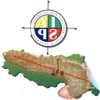Inflammatory Myofibroblastic Tumor of the Pancreas: A Case Report
Abstract
Context Inflammatory myofibroblastic tumors (IMTs), although originally described in the pulmonary system, are being reported in different anatomical locations. Case report A 55-year-old, asymptomatic man with clinical history of arterial hypertension and past smoking behavior, was admitted to our Surgical Unit in March 2012. A previous CT scan, performed for benign prostatic hyperplasia, revealed a 30 mm diameter mass in the pancreatic tail. Laboratory tests were within normal range. A further contrast-enhanced CT scan confirmed the presence of a nodular hypodense lesion with calcifications in the pancreatic tail, with no involvement of the spleen. A CWRM showed no communication with the main pancreatic duct. Finally, a 18F-FDG PET-CT scan showed no areas of pathological hyperfixation. The patient underwent a laparoscopic distal pancreatectomy. During the surgical procedure, due to the infiltration of transverse mesocolon and retroperitoneal fat, an en-block resection of pancreatic body-tail, spleen and splenic flexure of the colon was performed. The postoperative course was uneventful and the patient was discharged in postoperative day 9th. Macroscopically, the pathological examination showed a whitish, solitary, calcific, irregular shaped nodule. Microscopically, the lesion was characterized by myofibroblastic spindle cells mixed with diffuse inflammation made up of lymphocytes, plasmacells and eosinophils. Moreover, a myxoid struma together with a rich vascular growth was detected. These findings were consistent with a fasciitis-like variant of IMT. The patient is well and alive at 3 months from surgery. Conclusion To our knowledge, only 26 case of pancreatic IMT are reported in literature. They were mostly discovered incidentally and surgically treated, as in our case. This management seems to be correct because IMT is described as a neoplasm of intermediate biological behavior, with tendency for local recurrence instead of distant metastasizing.
Downloads
Copyright (c) 2014 Carlo Alberto Pacilio, Marielda D’Ambra, Riccardo Panzacchi, Giovanni Taffurelli, Salvatore Buscemi, Eugenia Peri, Claudio Ricci, Donatella Santini, Raffaele Pezzilli, Riccardo Casadei, Francesco Minni

This work is licensed under a Creative Commons Attribution 4.0 International License.
As a member of Publisher International Linking Association, PILA, iMedPub Group’s JOP follows the Creative Commons Attribution License and Scholars Open Access publishing policies. Journal of the Pancreas is the Council Contributor Member of Council of Science Editors (CSE) and following the CSE slogan Education, Ethics, and Evidence for Editors.
